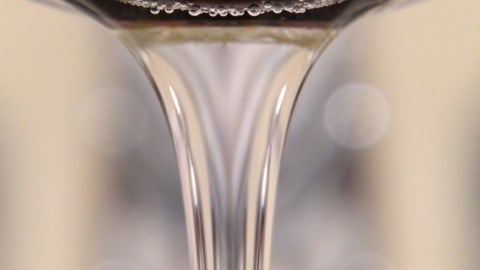Choosing the material for your seal is important as it will play a role in determining the quality, lifespan and performance of an application, and reducing problems in the future. Here, we take a look at how the environment will affect seal material selection, as well as some of the most common materials and which applications they are most suited to.
Environmental factors
The environment a seal will be exposed to is crucial when selecting the design and material. There are a number of key properties that seal materials need for all environments, including creating a stable seal face, able to conduct heat, chemically resistant, and good wear resistance.
In some environments, these properties will need to be stronger than in others. Other material properties that should be taken into account when considering the environment includes hardness, stiffness, thermal expansion, wear and chemical resistance. Keeping these in mind will help you to find the ideal material for your seal.
The environment can also determine whether cost or quality of the seal can be prioritised. For abrasive and harsh environments, seals may be more expensive due to the materials needing to be strong enough to withstand these conditions.
For such environments, spending the money for a highquality seal will pay itself back over time as it will help prevent the costly shutdowns, repairs, and refurbishment or replacement of the seal that a lower quality seal will result in. However, in pumping applications with very clean fluid that has lubricating properties, a cheaper seal could be purchased in favour of higher quality bearings.
Common seal materials
Carbon
Carbon used in seal faces is a mixture of amorphous carbon and graphite, with the percentages of each determining the physical properties on the final grade of carbon. It is an inert, stable material that can be self-lubricating.
It is widely used as one of the pair of end faces in mechanical seals, and it is also a popular material for segmented circumferential seals and piston rings under dry or small amounts of lubrication. This carbon/graphite mixture can also be impregnated with other materials to give it different characteristics such as reduced porosity, improved wear performance or improved strength.
A thermoset resin impregnated carbon seal is the most common for mechanical seals, with most resin impregnated carbons capable of operating in a wide range of chemicals from strong bases to strong acids. They also have good frictional properties and an adequate modulus to help control pressure distortions. This material is suited to general duty to 260°C (500°F) in water, coolants, fuels, oils, light chemical solutions, and food and drug applications.
Antimony impregnated carbon seals have also proven to be successful due to the strength and modulus of antimony, making it good for high pressure applications when a stronger and stiffer material is needed. These seals are also more resistant to blistering in applications with high viscosity fluids or light hydrocarbons, making it the standard grade for many refinery applications.
Carbon can also be impregnated with film formers such as fluorides for dry running, cryogenics and vacuum applications, or oxidation inhibitors like phosphates for high temperature, high speed, and turbine applications to 800ft/ sec and around 537°C (1,000°F).
Ceramic
Ceramics are inorganic non-metallic materials made from natural or synthetic compounds, most commonly alumina oxide or alumina. It has a high melting point, high hardness, high wear resistance and oxidisation resistance, so it is widely used in industries such as machinery, chemicals, petroleum, pharmaceutical and automobile.
It also has excellent dielectric properties and is commonly used for electrical insulators, wear resistant components, grinding media, and high temperature components. In high purities, alumina has excellent chemical resistance to most process fluids other than some strong acids, leading it to be used in many mechanical seal applications. However, alumina can fracture easily under thermal shock, which has restricted its use in some applications where this could be an issue.
Silicon carbide
Silicon carbide is made by fusing silica and coke. It is chemically similar to ceramic, but has better lubrication qualities and is harder, making it a good hard-wearing solution for harsh environments.
It can also be re-lapped and polished so a seal can be refurbished multiple times over its lifetime. It is generally used more mechanically, such as in mechanical seals for its good chemical corrosion resistance, high strength, high hardness, good wear resistance, small friction coefficient and high temperature resistance.
When used for mechanical seal faces, silicon carbide results in improved performance, increased seal life, lower maintenance costs, and lower running costs for rotating equipment such as turbines, compressors, and centrifugal pumps. Silicon carbide can have different properties depending on how it has been manufactured. Reaction bonded silicon carbide is formed by bonding silicon carbide particles to each other in a reaction process.
This process does not significantly affect most of the physical and thermal properties of the material, however it does limit the chemical resistance of the material. The most common chemicals that are a problem are caustics (and other high pH chemicals) and strong acids, and therefore reaction-bonded silicon carbide should not be used with these applications.
Self-sintered silicon carbide is made by sintering silicon carbide particles directly together using non-oxide sintering aids in an inert environment at temperatures over 2,000°C. Due to the lack of a secondary material (such as silicon), the direct sintered material is chemically resistant to almost any fluid and process condition likely to be seen in a centrifugal pump.
Tungsten carbide
Tungsten carbide is a highly versatile material like silicon carbide, but it is more suited to high pressure applications as it has higher elasticity which allows it to flex very slightly and prevent face distortion. Like silicon carbide, it can be re-lapped and polished.
Tungsten carbides are most often manufactured as cemented carbides so there is no attempt to bond tungsten carbide to itself. A secondary metal is added to bind or cement the tungsten carbide particles together, resulting in a material that has the combined properties of both tungsten carbide and the metal binder.
This has been used to an advantage by providing greater toughness and impact strength than possible with tungsten carbide alone. One of the weaknesses of cemented tungsten carbide is its high density. In the past, cobalt-bound tungsten carbide was used, however it has gradually been replaced by nickel-bound tungsten carbide due to it lacking the range of chemical compatibility required for industry.
Nickel-bound tungsten carbide is widely used for seal faces where high strength and high toughness properties are desired, and it has good chemical compatibility generally limited by the free nickel.

GFPTFE
GFPTFE has good chemical resistance, and the added glass reduces the friction of the sealing faces. It is ideal for relatively clean applications and is cheaper than other materials. There are sub-variants available to better match the seal to the requirements and environment, improving its overall performance.
Buna
Buna (also known as nitrile rubber) is a cost-effective elastomer for O-rings, sealants and moulded products. It is well known for its mechanical performance and performs well in oil-based, petrochemical and chemical applications. It is also widely used for crude oil, water, various alcohol, silicone grease and hydraulic fluid applications due to its inflexibility.
As Buna is a synthetic rubber copolymer, it performs well in applications requiring metal adhesion and abrasion-resistant material, and this chemical background also makes it ideal for sealant applications. Furthermore, it can withstand low temperatures as it is designed with poor acid and mild alkali resistance.
Buna is limited in applications with extreme factors such as high temperatures, weather, sunlight and steam resistance applications, and is not suitable with clean-in-place (CIP) sanitising agents containing acids and peroxides.
EPDM
EPDM is a synthetic rubber commonly used in automotive, construction and mechanical applications for seals and O-rings, tubing and washers. It is more expensive than Buna, but can withstand a variety of thermal, weather and mechanical properties due to its long-lasting high tensile strength. It is versatile and ideal for applications involving water, chlorine, bleach and other alkaline materials.
Due to its elastic and adhesive properties, once stretched, EPDM returns to its original shape regardless of the temperature. EPDM is not recommended for petroleum oil, fluids, chlorinated hydrocarbon or hydrocarbon solvent applications.
Viton
Viton is a long-lasting, highperformance, fluorinated, hydrocarbon rubber product most commonly used in O-Rings and seals. It is more expensive than other rubber materials but it is the preferred option for the most challenging and demanding sealing needs.
Resistant to ozone, oxidation and extreme weather conditions, including materials such as aliphatic and aromatic hydrocarbons, halogenated fluids and strong acid materials, it is one of the more robust fluoroelastomers.
Choosing the correct material for sealing is important for the success of an application. While many seal materials are similar, each serves a variety of purposes to meet any specific need.





















Comments are closed.
it is good to give chart where appcable seals can be used.